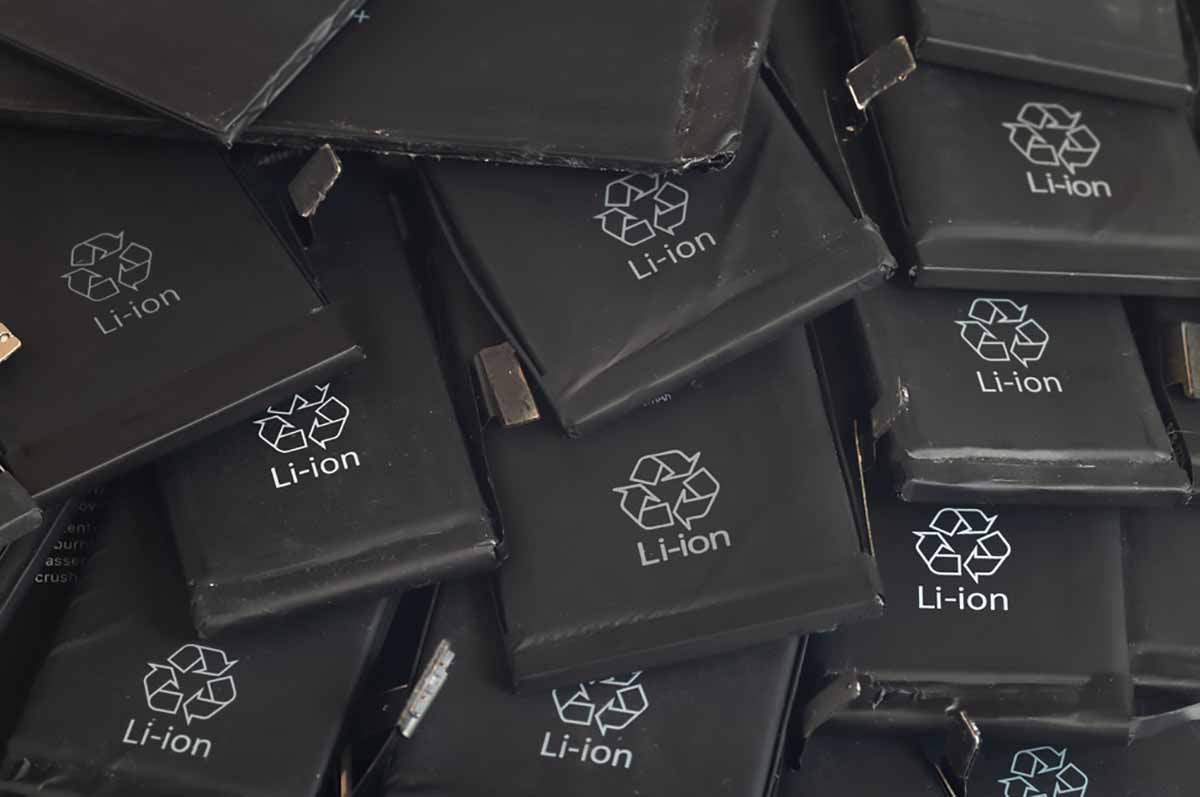
AI-powered battery removal systems have the potential to prevent facility fires from starting in the first place, argues Raghav Mecheri of BinIt. | Skimin0k/Shutterstock
As record-high numbers of batteries enter the solid waste stream, they have increasingly become associated with facility fires, safety issues and danger to workers.
Last year alone saw more than 2,000 fire incidents in the recycled materials industry in the U.S. and Canada. With global demand for lithium-ion batteries projected to increase 500% by 2030, the electronics recycling industry has been forced to move rapidly to head off the growing crisis.
But though facility operators currently tend to see batteries as a problem and safety concern, it’s important to keep in mind that processing and detection technology is advancing fast. As we look to the future, batteries could become an important source of revenue for recyclers that see themselves as key players in securing sustainable supplies of critical materials.
The Case for Proactive Battery Removal
Because detecting and removing batteries has been impractical given their size and the burden depth of incoming material, we have until now dealt with battery fires by using flame-suppression systems.
However, newer AI-powered systems have the capability to change that by using automated monitoring of feed lines to enable the preventative removal of batteries and other hazards from our waste streams. BinIt, the company I founded, uses X-ray imaging to identify common battery types as well as other dangers like gas tanks.
The transition from a reactive approach to the new proactive, extraction-based model offers a new opportunity and presents the industry with a new question: “What do we do with all the batteries we’re removing from waste streams?”
For two reasons, the answer lies in using that recovered material to feed manufacturing supply chains. First, batteries are difficult to dispose of safely. And second, we need the raw materials.
Learn more in person
Raghav Mecheri will be discussing technology advancements to improve hazard detection during a session at the E-Scrap & E-Reuse Conference in New Orleans. He will be part of the “Innovation in Action” discussion on Tuesday, Sept. 19, at 3:30 p.m. The session is part of an info-packed three day schedule. Register for the event today.
Lithium already plays a crucial role in the battle against climate change thanks to its capacity for powering electric vehicles, but less than 5% of all batteries are ever recycled. The rapidly emerging battery recycling industry aims to move the needle on that statistic. Its first challenge is procuring feedstock in large enough volumes to generate short-term scale as we work toward establishing longer-term battery pipelines.
Where are all the batteries?
Most batteries end up in everyday household waste streams. That means consumer education is a top priority, and the good news is that Congress has allocated $10 million toward battery recycling best practices and $15 million for battery labeling guidelines, both to be enacted through the U.S. EPA.
In the meantime, a parallel course of action will focus on better detection and removal.
Early field data from BinIt Hazard suggests that between 15 and 30 lithium-ion batteries are passing undetected through each recycling facility on a daily basis. Common lithium-ion batteries can weigh anywhere from 10 to 50 pounds, but conservatively, we estimate that at least 150,000 pounds of lithium-ion batteries are moving through North America’s materials recovery facilities (MRFs) every 24 hours. Even at the modest buyback rate of 25 cents per pound, that’s a staggering $15 million revenue opportunity.
The EPA is currently in the second year of the Solid Waste Infrastructure for Recycling grant program, which allocates $55 million annually to improve recycling processes across the country. Our low-end estimate for revenue from recaptured lithium is equivalent to more than a quarter (27%) of that annual grant from the EPA – and unlike government grant funding, battery retrieval revenue will increase exponentially as EV adoption increases.
What next?
Right now, we can reliably identify and remove batteries from waste streams, and we have a rough sense of the size of the potential market for recovered materials. The next steps will bring new challenges: understanding the demand for this newly precious commodity, for example, and devising a method to safely pack and transport batteries from our facilities to the appropriate recyclers.
One thing is certain, however. As materials like lithium, cobalt, and nickel become increasingly important to global supply chains, including them in the circular economy is becoming exponentially more valuable in both ecological and economic terms. The White House has declared that securing a Made In America supply chain for critical minerals is a matter of national security. And while community education will remain a vital priority, it is essential that we also have reliable workflows to handle the 68% of material that is not correctly recycled.
Today, building technology that empowers recyclers to detect and remove materials such as lithium-ion batteries is predominantly a safety issue. Over the coming decade, however, it may well become a foundational responsibility for our industry – one demanding that we rise to the occasion with innovative new technologies, strong industrial processes and bold visions for the future.
Raghav Mecheri is the CEO of BinIt, a company that builds AI-powered recycling infrastructure. He can be contacted at [email protected].
The views and opinions expressed are those of the author and do not imply endorsement by Resource Recycling, Inc. If you have a subject you wish to cover in an op-ed, please send a short proposal to [email protected] for consideration.


